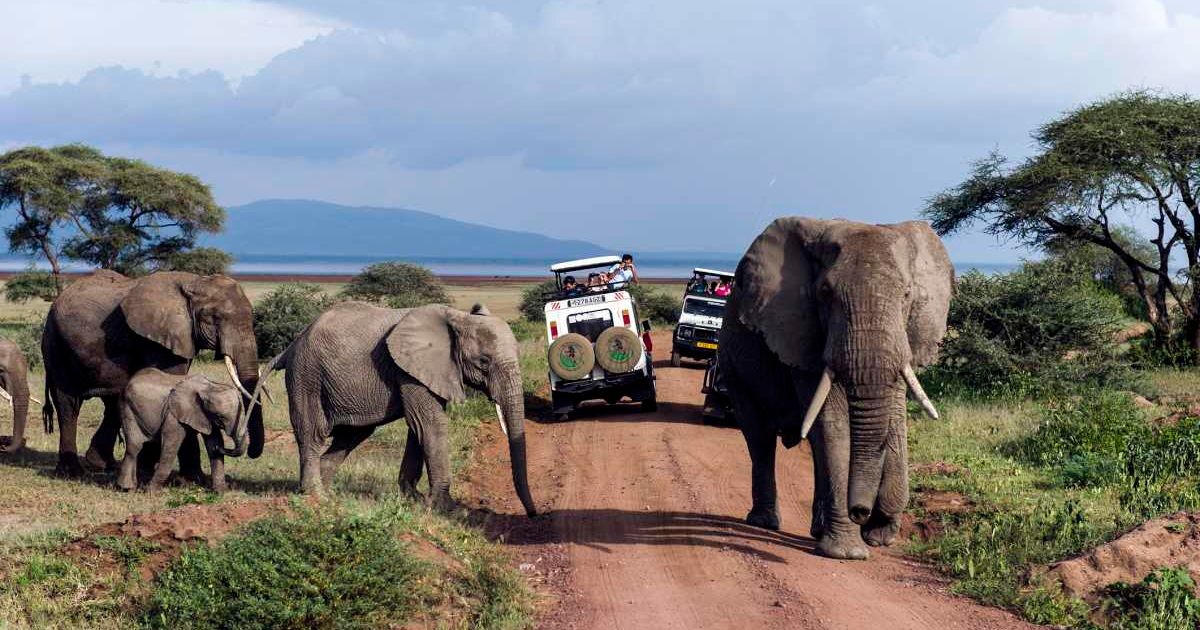Scientists Find Surprising Cause of African Elephant Mass Deaths — and Humans Aren’t To Blame

African elephants have long been facing a range of threats, which are both natural and human-made. While human activities such as poaching for ivory are a major danger, habitat loss due to agriculture and urban expansion, and conflicts with local communities have also affected the elephant population over the years. Apart from this, natural factors, including disease, drought, and food shortages, also contribute to their mortality. In a recent study, researchers have identified another surprising cause behind the mass deaths of massive African elephants, recorded between 2020 to 2022 in Hwange National Park, located in Zimbabwe.

The findings of the research were revealed in a study titled, ‘Proximity to water shapes the distribution of natural elephant mortality in Hwange National Park, Zimbabwe.’ It was published by the journal Scientific Reports. To identify the mysterious cause behind the elephant deaths, researchers used four machine learning species distribution models—Random Forest, Gradient Boosting, Maximum Entropy, and Extreme Gradient Boosting—along with a combined ensemble approach to locate the areas where mortality was said to be the highest. This extensive process allowed scientists and researchers to find out that the main natural cause of elephant mortality in the said time period was proximity to water bodies.

The authors of the study wrote, “Among all predictors, distance to water sources was the most influential variable (accounting for > 55% of model importance), with most mortalities occurring within 6 km of water points.” They added, “Other key predictors included climate water deficit, normalized difference vegetation index (NDVI), tree cover percentage, and elephant density (each contributing > 5%).” They came to this conclusion as the carcasses analyzed for the study were found with tusks intact and showed no signs of injuries, poisoning, or chemical contamination. Findings also suggest that being close to water during dry periods may have increased the risk.

When elephants gather around stagnant water bodies, they are reportedly exposed to harmful bacteria and toxins, like those causing cyanobacterial poisoning and blood infections. Warm, nutrient-rich water during dry months helps these bacteria to grow, making it more likely that elephants drinking from these sources might fall sick. Authors also said, “Another possibility is that aged or compromised individuals are less able to forage or travel long distances from water sources during harsh conditions, effectively becoming trapped in high-prevalence zones.” Moving ahead, the team also claimed that while scientists already have a good understanding of how elephants respond to human-related threats, their deaths in regions linked to natural causes are less well-known.

Filling this knowledge gap is very important for developing proactive conservation strategies, helping protect elephants more effectively before the situation becomes worse. The authors state, “Our results provide actionable insights for conservation planning. Areas close to water sources, particularly during dry periods, should be prioritized for monitoring and veterinary intervention. Meanwhile, regions with historically low mortality prevalences may serve as safer sites for reintroduction.” Protecting these giant animals is important, as they are the ones whose presence shapes entire landscapes, even earning them the nickname of being the ecosystem engineers. Their feeding habits, movements, and even social behaviors have long captured the interests of researchers.
More on Green Matters
National Geographic’s ‘Secrets of the Elephants’ Examines the Desert’s Toughest Species
A Lawsuit Over Elephant Rights Has Sparked Conversations About Animal Intelligence
Drunk Elephant’s Controversy: Why Did the Popular Skincare Company Lose Its Cult Following?